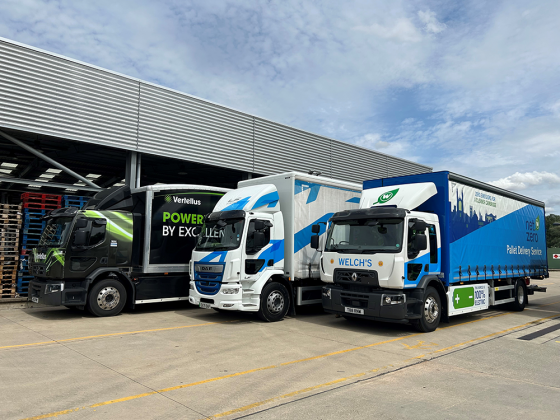Expert Panel: Electric Vehicles

Motivated by a need to cut emissions and improve air quality, governments around the world are encouraging and incentivising drivers to move towards zero or ultra-low emission electric vehicles.
Vehicle manufacturers are responding by putting more and more electric vehicle models onto the market – and now every major manufacturer has a plug-in vehicle of some kind.
What’s more, in many countries, the infrastructure to charge such vehicles is growing. Indeed Japan now has more electric car charge points than petrol stations.
Europe wants electric
On the 20 July 2016, the European Commission published its strategy for low emission mobility. It detailed plans to speed up the deployment of low emission alternative energy for transport, such as electricity, hydrogen, advanced biofuels and renewable synthetic fuels, as well as removing obstacles to the electrification of transport. It also outlined plans for Europe to accelerate the transition towards low and zero-emission vehicles.
While the UK’s future with the EU is still uncertain following Brexit, the UK government has its own stringent targets for lowering carbon; the Climate Change Act (2008) requires the UK to reduce greenhouse gas emissions by at least 35 per cent by 2020 and 80 per cent by 2050 from 1990 levels. Transport accounts for around a quarter of UK greenhouse gas emissions and so it has a critical role to play in the government’s carbon plans.
Poppy Welch, head of the Go Ultra Low campaign, said: “The UK recognises the importance of electric vehicles the country’s low carbon future so has put in place a broad spectrum of support. The government has made a manifesto commitment for every car and van on the road to be zero emission by 2050, a target that is more ambitious than most other countries. Electric vehicles are therefore crucial to the government in achieving this.”
Electric Britain
While the UK has seen a scattering of electric vehicles throughout history, modern production electric vehicles only started to gain momentum in 2011. This is when the government introduced its Plug-in Car Grant (PiCG) of (then) £5,000 and electric models – such as the Mitsubishi i-Miev, Peugeot Ion and Nissan Leaf – started to grace the roads. Back then there were only nine electric models available from major manufacturers; now there are more than 35, with more models to be launched.
While it has been a slow burner, the appetite for electric and hybrid vehicles has increased and there are now around 80,000 electric vehicles on the UK’s roads – both PiCG eligible and not. What’s more, there are over 11,000 public charge points in the UK (source: Next Green Car).
For this calendar year until May, among the top-selling European countries for electric vehicles are Norway, which leads with 18,734 units, the UK with 16,056, France is third with 15,267, Germany follows at 8,783, and Sweden saw 4,509 sales. The Netherlands through April is at 3,592 (source: www.hybridcars.com).
UK incentives
At the end of 2015, the government announced that the Plug-in Car Grant would continue until the end of March 2018 but that the maximum available discount would drop from £5,000 to £4,500. The amount saved now ties in with what vehicle category is bought, with the maximum grant applying to vehicles with less than 50g/km and a zero emission range of at least 70 miles. The other two vehicle categories are eligible for a £2,500 grant. The scheme also offers 20 per cent off the cost of a van, up to a maximum of £8,000.
Alongside direct subsidies on the purchase price of an EV, the government has an Electric Vehicle Homecharge Scheme, allowing buyers to get £500 towards the cost of installing a charging point at their home – albeit reduced from the original figure of £700.
Other incentives include exemption from Vehicle Excise Duty and lower company car tax, as well as being free from the congestion charge in London. Other UK cities offer perks to EV drivers such as free parking and the ability to use bus lanes in cities such as Milton Keynes. This is thanks to the government’s £40m Go Ultra Low City Scheme which supports incentives to encourage electric driving.
Supportive policies
Poppy Welch believes it is the support from government and the open-mindedness of the British people that has resulted in such rapid growth of electric vehicles in recent years: “The UK is one of the world’s largest EV markets and ranks as the top major market in Europe, second only to Norway in the continent as a whole. This success is due to a host of supportive policies from government, an open-minded attitude to adopting new vehicles and is helped by the UK being a manufacturing base for electric vehicles, their batteries and components.”
Mark Bonnor-Moris, director of business development for Chargemaster, says the UK’s incentives “are wide-ranging and have been available for a significant period of time compared to many other countries. They have been targeted at different user groups, such as private, company and commercial EV buyers through both direct grant and taxation incentives.
“The incentives have covered many different types of charging infrastructure – home, destination and rapid charging – resulting in a high penetration of home chargers and an extensive public charging network. Resource and expertise has been funded and made available to address the concerns of fleet manager and assist with the adoption of EV within large fleets, and public awareness campaigns have been run through the Go Ultra Low programme.”
Speaking about how the UK’s incentive scheme differs from other countries, Sander van der Veen, UK country manager from the New Motion says: “One major difference that stands out is the home charge scheme for charge points that OLEV has been and still is running. In most countries the incentives are targeted purely towards the car rather than the infrastructure.
“As we know, in starting markets this industry always faces a chicken and egg problem: without infrastructure there will be no EV buyers and without EVs on the road nobody wants to invest in infrastructure. The government tried to address both sides at the same time and one of the remnants today is the home charge grant in a reduced form.”
Mark Bonnor-Moris points to the added advantage the green motoring market has brought the UK through increased jobs, skills and innovation: “Increased adoption of EVs helps improve air quality in cities through reduced emissions and by encouraging uptake of EV and charging infrastructure through incentives the UK now has a new industry sector providing long-term jobs and skills for UK plc. As adoption increases, which it inevitably will, the daily lives of millions of people living in city centres will be improved and more and more jobs will be created within this new and innovative industry sector.”
Norway
Norway is the world leader in electric cars per capita and has recently become the fourth country in the world to have 100,000 of them on the roads, behind the US, Japan and China. Given that they have a population of just five million, this is quite an achievement.
Norway’s government has achieved this success with an extensive incentive package, including no purchase taxes – which are usually high in Norway; exemption from 25 per cent VAT on purchase; low annual road tax; 50 per cent reduction in company car tax; and No VAT on leasing. Other perks include no charges on toll roads or ferries, free municipal parking, and access to bus lanes.
But what stands out most is that drivers can charge their car for free at the public charge stations, owing to the fact that the country runs on nearly 100 per cent renewable and cheap hydro power.
And to incentivise clean driving even more, the government has put a heavy tax on high polluting cars. This has helped bring the cost of EVs in line with conventional vehicles.
Gary Stirling, operations support manager for Everwarm highlights the gap between countries like Norway and the UK. He says: “I believe the EV market in the UK has seen significant growth over the last few years however there is still a fair bit of work to do if we wish to reach the same uptake as countries such as Norway and Estonia. At the moment there are approximately 80,000 plug in electric vehicles on Britain’s roads which is fantastic when you consider as recently as 2013 there were only 3,586 registered in the UK.
However, when you start to compare the UK to other European countries, you start to see how far behind them we really are. For example, Norway has the 28th largest population in Europe yet has the 4th largest electric vehicle market in the World.”
European contenders
The German government has set a target to have one million electric powered cars on the road by 2020. To help facilitate this, it is spending €1 billion on a package of incentives, infrastructure and other schemes. German drivers can get a €4,000 subsidy for electric vehicles and €3,000 for hybrids, which is funded by both the government and car manufacturers. The government has also budgeted €300,000 to speed up building the infrastructure of electric car-charging stations in cities and on autobahn highway stops, as well as another €100,000 for purchasing electric cars for federal government fleets.
France meanwhile is making a bold move to get old polluting diesel vehicles off the road by offering owners up to €10,000 to switch to an electric vehicle and send their old diesel to the scrapyard.
It has been reported that the Netherlands wants to ban sales of petrol and diesel cars from 2025 onwards, although this motion still needs to be passed by the Senate. Up until January 2014, the Dutch government had been incentivising the purchase EV by making them exempt from registration fees and road taxes.
Driver concerns
Whilst the amount of electric vehicles in the UK is growing rapidly, it still equates to just around 1.4 per cent of the total new car market. So what more can be done to convince the public to swap to electric vehicles? The vehicle’s range and uncertainty over the charging infrastructure are often cited as the main concerns – as is the expensive upfront cost. For two of our expert panelists, it boils down to education.
Gary Stirling says: “I speak with people every day who are interested in owning an electric vehicle but it’s always the same two worries that they all share; one is they are concerned about the range they can get from an EV, the second is where they can charge an EV. After speaking with these people and explaining just how vast the charging infrastructure is, it puts a lot of their worries to bed.
“I believe more time is needed to be spent on educating the public on just how practical these cars are. Car manufacturers are getting better and better and with every new EV that is released we see an increase in the range the vehicles are capable of achieving – this is a massive factor which contributes to the public’s willingness to take the step into owning an EV.”
Sander van der Veen says: “I think there’s a big role to play for education. Especially on the fleet manager’s side, the industry needs to take the initiative to explain what it means to run an EV fleet. Fleet managers these days are getting pressure both from a cost savings as well as a CSR perspective and in many case find themselves scrambling to fully understand the products and requirements on the market. We’ve seen fleets that, based on telemetry data analysis, would be able to operate to a large extent on battery EVs and it’s the industries responsibility to help those fleet managers understand this.”
Infrastructure
Despite there being over 11,000 public charge points in the UK, the network is still patchy. Gary Stirling says: “We need to continue growing the charging infrastructure in the UK. At the moment Estonia has charging facilities every 25 to 37 miles on highways; this is the kind of coverage we need to have in the UK to stimulate the uptake of EVs.”
Identifying another problem with the infrastructure, Sander van der Veen says: “Looking at the UK market through the Dutch lens, there is a real need for more transparency and convenience for EV drivers when it comes to where you can charge your car. In the UK, if worst comes to worst you can find yourself driving around with five different charge cards in your pocket, to be able to charge at every charge point. In the Netherlands an EV driver can charge his car on every (public) charge point with his charge card, regardless of the network operator. The reason is that all network operators have agreed to allow roaming on each other’s networks.”
Meanwhile Mark Bonnor-Moris says: “Network providers must provide 100 per cent available and reliable networks and avoid charging EV drivers unreasonable tariffs. It would be helpful if workplaces investing in EVs could get clarity from OLEV as to their plans on grants, as the continuing delayed decision on what might or might not be available is delaying investment in infrastructure.”
The future
The National Grid launched a report – Future Energy Scenarios 2016 – which predicts that up to 9.7 million EVs could be on UK roads by 2040. It says that even if the markets stay as they are – the least optimistic forecast – the report predicts that 1.15 million electric vehicles will be on the road within 15 years, with that figure almost reaching 4 million units by 2040. The best case scenario sees 9.7 million electric vehicles by 2040, and around ten times the current figure by 2030.
Sander van der Veen also has an optimistic view of the future of electric mobility, saying: “As with most cases of new technology (think the iPhone), the shift to EV will happen much faster than everyone thinks and before you know it EVs are the new normal, just like you can’t imagine yourself walking around with a feature phone anymore. The real tipping point for mass uptake is only two to three years out with affordable cars coming to market with over 200 miles of range such as the Tesla Model 3."






